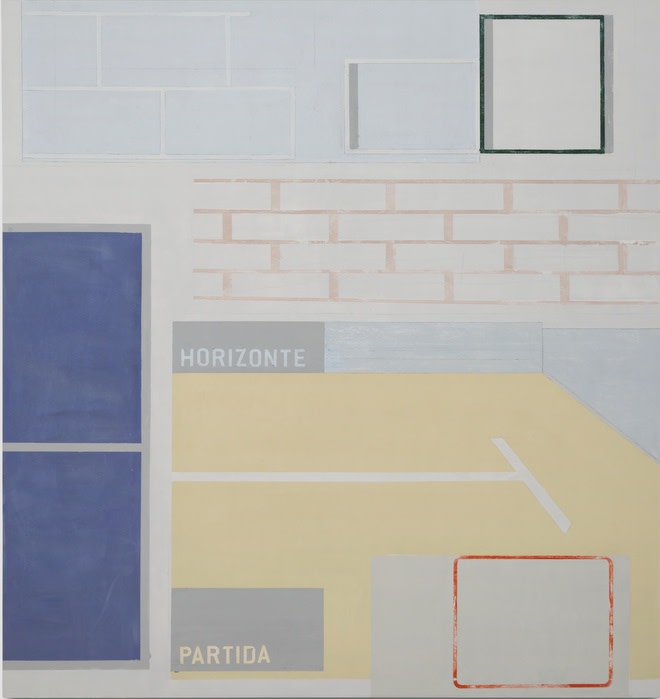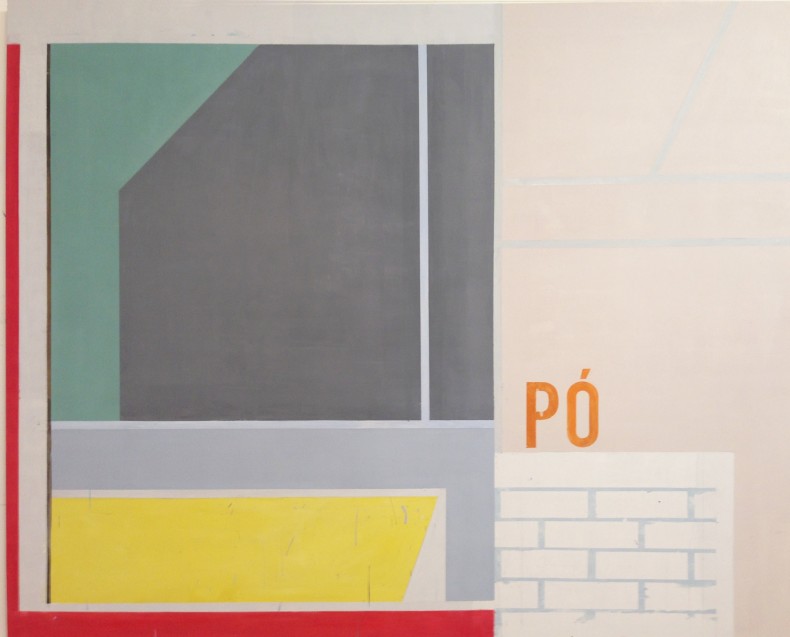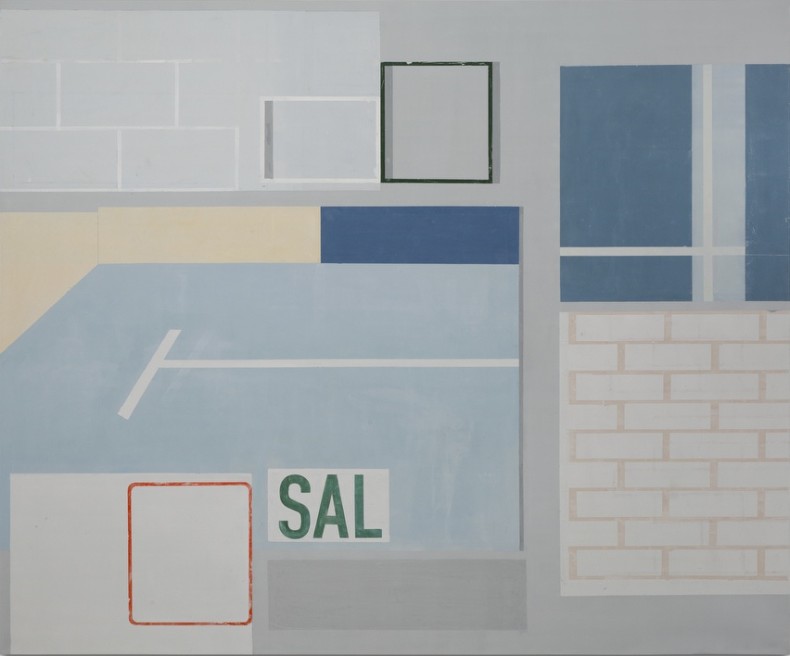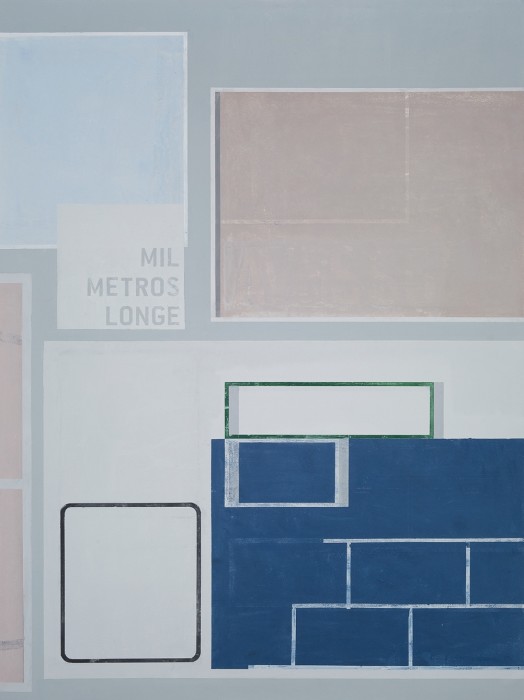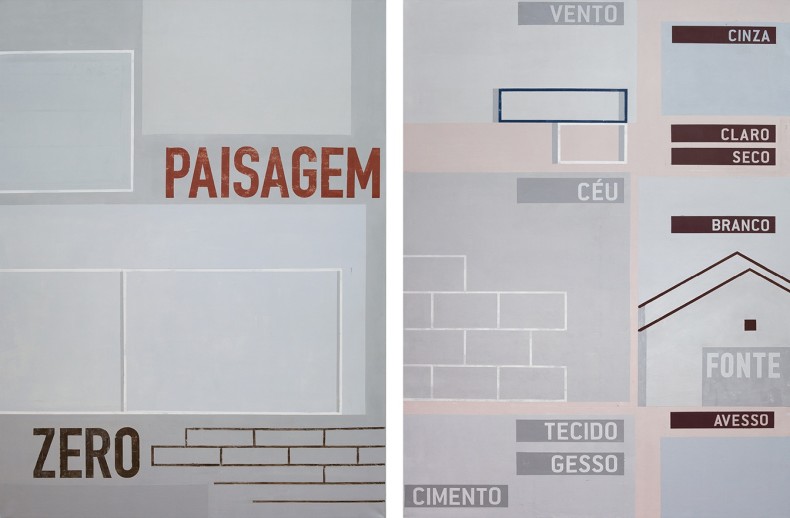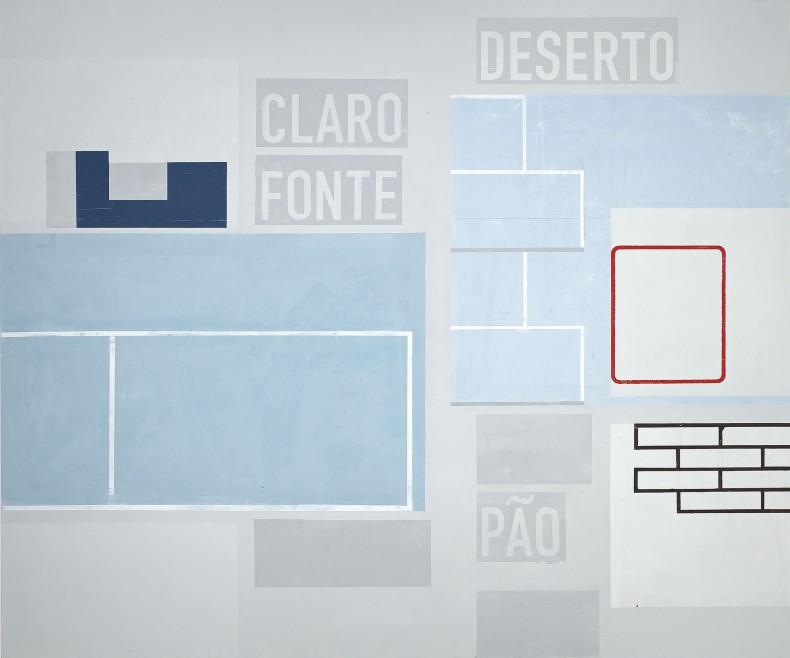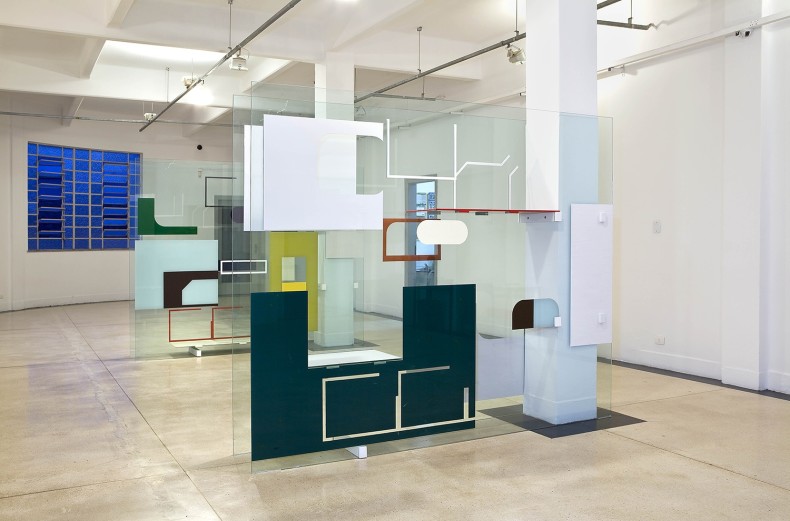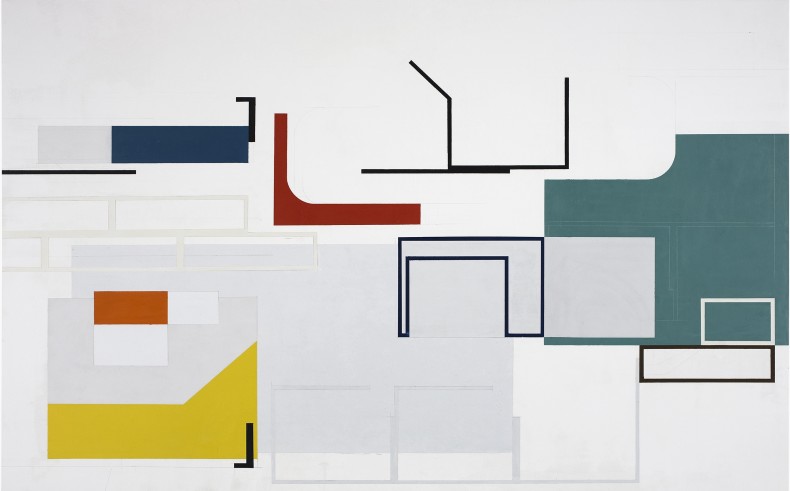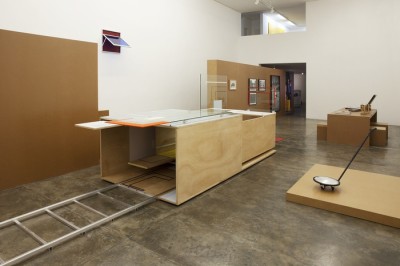horizonte partida, 2015
Biography
Fabio Miguez (b. 1962, São Paulo, Brazil) began his artistic career in the 1980s when, alongside Carlito Carvalhosa, Nuno Ramos, Paulo Monteiro, and Rodrigo Andrade, he founded the artist’s space Casa 7. Miguez initially worked with painting like the others group members. During the 1990s, he started to produce, parallel to his paintings, the series of photographs entitled Derivas, later published with the name Paisagem Zero in 2013. Those photos are closely related to the paintings as we can see in the tension between the indeterminacy of the process and the apparent construction of the final product and in the density of light and dark shades.
In the 2000s, Miguez started to develop three-dimensional works, such as the installations Onde (2006), Valises (2007), and Ping‑pong (2008), which expands his line of research and his medium of choice: painting. His degree in architecture brings to his work a constructivist influence that dialogues with concerns regarding scale, material, and figuration. The artist often deals with modular forms in relation to combinatory logic, employing repetitions and operations of inversion and mirroring. In his work, every painting is a fragment of the real in the way that each one reaffirms its material condition.
Fábio Miguez lives and works in São Paulo, Brazil. Main recent solo shows include: Alvenarias, at Nara Roesler (2022), in São Paulo, Brazil; Fragmentos do real (atalhos), at Instituto Figueiredo Ferraz (IFF) (2018), in Ribeirão Preto, Brazil; Horizonte, deserto, tecido, cimento, at Nara Roesler (2015), in São Paulo, Brazil; Paisagem zero, at Centro Universitário Maria Antonia (CEUMA) (2012), in São Paulo, Brazil; and Temas e variações, at Instituto Tomie Ohtake (ITO) (2008), in São Paulo, Brazil. He has participated in several biennials, such as: Bienal de São Paulo (1985 and 1989), 2nd Havana Biennial, Cuba (1986), and 5th Bienal do Mercosul, Porto Alegre, Brazil (2005). Recent group shows include: Coleções no MuBE: Dulce e João Carlos de Figueiredo Ferraz – Construções e geometrias, at Museu de Ecologia e Escultura (MuBE) (2019), in São Paulo, Brazil; Oito décadas de abstração informal, at Museu de Arte Moderna de São Paulo (MAM-SP) (2018), in São Paulo, Brazil; Auroras – Pequenas pinturas, Espaço Auroras, São Paulo, Brazil, 2016; Casa 7, at Pivô (2015), in São Paulo, Brazil. His works are including in important institutional collections, such as: Instituto Figueiredo Ferraz (IFF), Ribeirão Preto, Brazil; Museu de Arte Moderna do Rio de Janeiro (MAM Rio), Rio de Janeiro, Brazil; Museu de Arte Moderna de São Paulo (MAM-SP), São Paulo, Brazil; e Pinacoteca do Estado de São Paulo, São Paulo, Brazil; among others.
Exhibitions
-

fabio miguez: ichnographies
fabio miguez 13.3 - 19.4.2025Nara Roesler New York is pleased to present Fabio Miguez: Ichnographies , the first solo show by Fabio Miguez (b. 1962, São Paulo, Brazil) at...Read more -
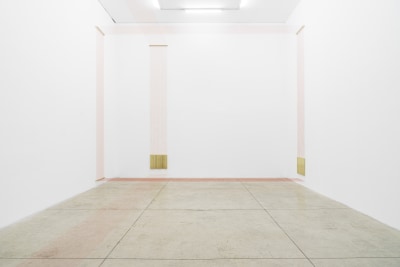
color among lines
núcleo curatorial nara roesler e artur lescher 6.2 - 15.3.2025Nara Roesler São Paulo is pleased to present Color Among Lines, curated by the Nara Roesler Curatorial Project in collaboration with Artur Lescher . This...Read more -

affective spins
nara roesler curatorial project 31.10.2024 - 18.1.2025Nara Roesler São Paulo is pleased to present Affective Spins, curated by Luis Pérez-Oramas. The exhibition features works by 20 artists from this period: Amelia...Read more -
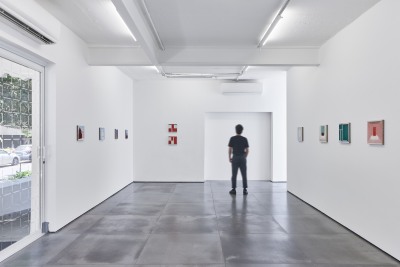
construtor de memória
fabio miguez 23.11.2023 - 17.2.2024Nara Roesler Rio de Janeiro is pleased to present Construtor de memória, a solo show by Fa bio Miguez that brings together around 30...Read more -

co/respondences: brazil and abroad
luis pérez-oramas 22.6 - 25.8.2023Galeria Nara Roesler New York is pleased to present Co/respondences: Brazil and Abroad , a group show curated by Luis Pérez-Oramas where works by major...Read more
-
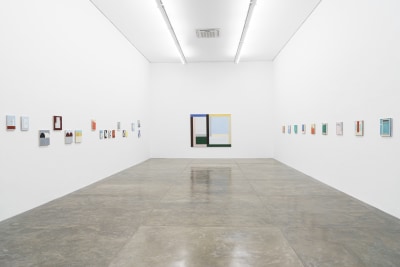
alvenarias
fabio miguez 28.5 - 30.7.2022Nara Roesler São Paulo is pleased to present Alvenarias, an exhibition by Fabio Miguez that brings together over forty paintings, organized into two series: Atalhos...Read more -
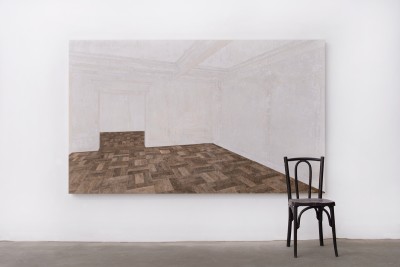
in waiting: works produced in isolation
núcleo curatorial nara roesler 9.12.2020 - 14.2.2021In Waiting: Works Produced in Isolation brings together a selection of works produced during isolation by various artists represented by Nara Roesler—thoughts about seclusion have...Read more -
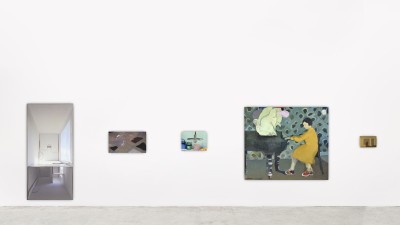
inside | online exhibition
11.4 - 30.5.2020Inside is a virtual exhibition composed of dissimilar works, grouped under the common denominator of the inside/interior. The emblematic image of the curatorial selection is...Read more -
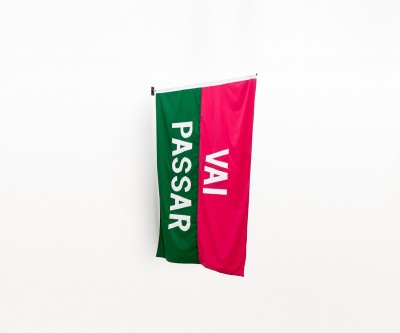
#arteconecta
galeria nara roesler + uniãosp 2.4 - 30.6.2020UniãoSP is an independent and voluntary initiative to strengthen the battle against coronavirus in the state of São Paulo. The group coordinates its actions with...Read more -
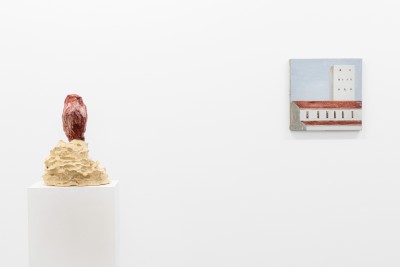
estruturas encontradas
luis pérez-oramas 2.12.2019 - 15.2.2020It is with great pleasure that Galeria Nara Roesler | São Paulo presents Estruturas Encontradas [Found Structures], a group exhibition bringing together artworks by Brígida...Read more
-
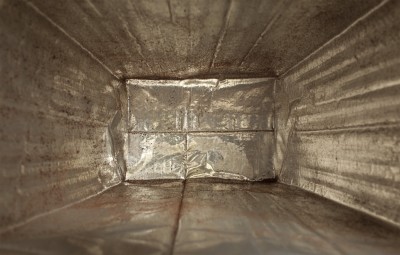
arquiteturas do imaginário
abraham palatnik, alberto baraya, alexandre arrechea, artur lescher, dan graham, daniel senise, eduardo coimbra, fabio miguez, lucia koch, marco maggi, marcos chaves, paulo bruscky, philippe decrauzat, raul mourão, rené francisco 14.2 - 30.3.2019Galeria Nara Roesler | Rio de Janeiro presents Arquiteturas do Imaginário [Architectures of the Imaginary], a group show based on works that deal with issues...Read more -
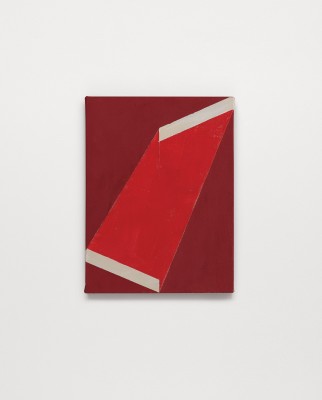
fragmentos do real (atalhos)
fabio miguez 23.6 - 11.8.2018Galeria Nara Roesler is pleased to announce “Fragmentos do Real (Atalhos),” a traveling exhibition of paintings by Fabio Miguez. The exhibition at Galeria Nara Roesler...Read more -
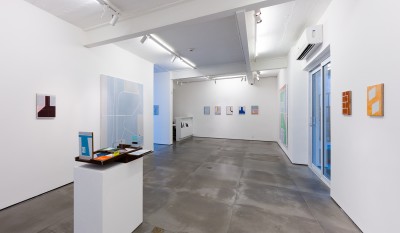
atalhos
fabio miguez 31.5 - 25.7.2016Galeria Nara Roesler | Rio de Janeiro is pleased to present Atalhos (Shortcuts) an exhibition of small-scale pieces, large paintings, and Valises by Fabio Miguez....Read more -

horizonte deserto tecido cimento
fabio miguez 28.2 - 28.3.2015Galeria Nara Roesler opens its 2015 exhibition season in São Paulo with the show Horizonte, Deserto, Tecido, Cimento (Horizon, Desert, Fabric, Cement), slated to run...Read more -

coleção figueiredo ferraz
fabio miguez 28.2 - 28.3.2015Read more
News
-

cinco ensaios sobre o masp: geometrias
brígida baltar, jose dávila, josé patrício, fabio miguez, tomie ohtake 25.3.2025MASP – Museu de Arte de São Paulo Assis Chateaubriand presents, from March 28 to August 3, 2025, the exhibition Cinco ensaios sobre o MASP...Read more -
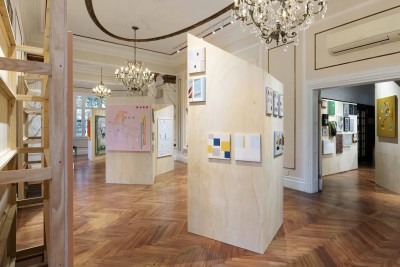
semana de 21
fabio miguez 30.8.2021Fabio Miguez is one of the artists that participate in 'Semana de 21'. The exhibition inaugurates the Instituto Artium's space, a hundred years old building...Read more -
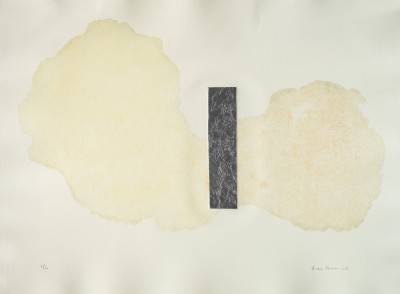
ateliê de gravura: da tradição à experimentação
angelo venosa, antonio dias, carlito carvalhosa, cristina canale, daniel senise, fábio miguez, josé patrício, karin lambrecht, león ferrari, lucia koch, marcos chaves, paulo bruscky, tomie ohtake 24.1.2019Thirteen artists represented by Galeria Nara Roesler take part in the collective exhibition Ateliê de Gravura: da tradição à experimentação, curated by Eduardo Haesbaert at...Read more -

oito décadas de abstração informal
angelo venosa, carlito carvalhosa, fabio miguez, karin lambrecht, tomie ohtake 16.1.2018Opening today, at MAM - Museu de Arte Moderna de São Paulo the exhibition 'Eight Decades of Informal Abstraction'. Curated by Felipe Chaimovich, the exhibition...Read more -

fragmentos de um discurso pictórico
fábio miguez, sérgio sister 18.8.2017O trabalho de 13 artistas de diversas regiões do Brasil, alguns dos quais vivendo no exterior, será mostrado em Fragmentos de um Discurso Pictórico, exposição...Read more
Press
-
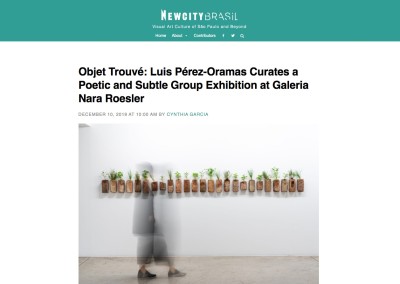 Download
View article
Download
View article
objet trouvé: luis pérez-oramas curates a poetic and subtle group exhibition at galeria nara roesler
cynthia garcia, Newcity Brasil 10.12.2019 -
 Download
Download
a pintura reinventada
antonio gonçalves filho, o estado de s. paulo 23.6.2018 -
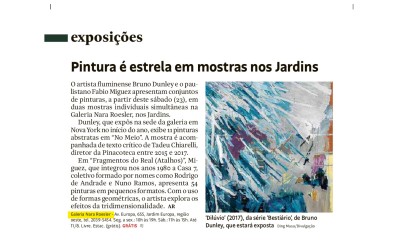 Download
Download
pintura é estrela em mostras nos jardins
folha de s.paulo - guia da folha 22.6.2018
Video
-
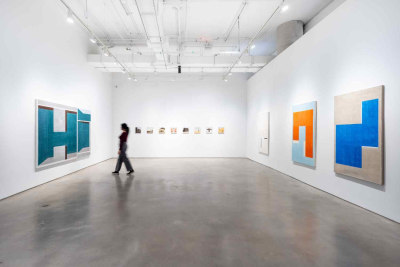
icnografias
fabio miguez 10.4.2025Nara Roesler New York is pleased to present Fabio Miguez: Ichnographies , the first solo show by Fabio Miguez (b. 1962, São Paulo, Brazil) at...Read more -
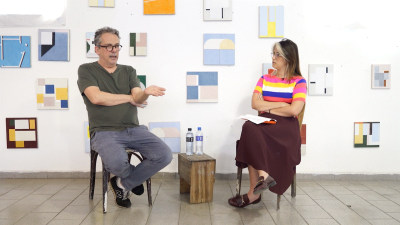
fabio miguez conversa com pollyana quintella
23.11.2023On the occasion of Fabio Miguez 's solo exhibition Construtor de Memória [Memory Builder] at Nara Roesler Rio de Janeiro, the artist was interviewed by...Read more -

co/respondences: brazil and abroad | nara roesler new york
19.7.2023Nara Roesler New York is pleased to present Co/respondences: Brazil and Abroad , a group show curated by Luis Pérez-Oramas where works by major Brazilian...Read more -
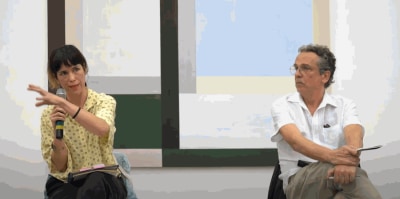
talk | fabio miguez + ana prata + bruno dunley
fabio miguez 16.9.2022Read more -

fabio miguez | alvenarias
fabio miguez 16.9.2022Read more -

estruturas encontradas
curadoria de luis pérez-oramas 5.12.2019It is with great pleasure that Galeria Nara Roesler | São Paulo presents Estruturas Encontradas [Found Structures], a group exhibition bringing together artworks by Brígida...Read more -
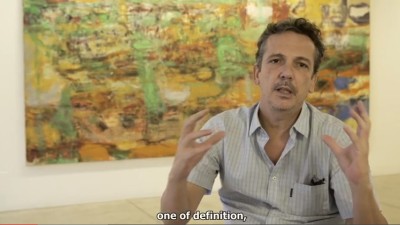
horizonte deserto tecido cimento
fabio miguez 4.3.2015Read more
Critical Essays
-
fragments of real*
rodrigo mouraTo start somewhere, first I should point out the unsettled nature I perceive in the paintings of Fábio Miguez over the past decade-and-a-half during which I have followed it from up close. It is as though the artist had slowly and consciously put in question several assumptions from his own practice, thereby taking it to realms which, if not alien, are unexpected to say the least. In 2002, for the eponymous exhibition at São Paulo’s 10,20 x 3,60 gallery, Miguez led his painting (which had by then already taken on more geometrical contours) outside the canvas, with transparent glass planes and bits of shape-color in space. Viewers were able traverse the exhibition as if they were walking inside a painting, and the whites in the pictures had transformed into the space itself. This gesture had a few implications in the works that followed. On the one hand, the empty spaces in his paintings grew denser, the chromatic masses standing out more evidently and giving compositions a more diagrammatic...
